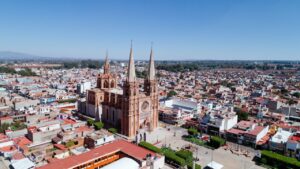Saint Anthony of Padua 13 C. Portuguese Priest and Record Setter
Saint Anthony of Padua was born on 15 August 15 1195 and died on 13 June 13 1231 was a Portuguese Catholic priest and member of the Order of Friars Minor. Saint Anthony of Padua was born and raised by a wealthy family in Lisbon, Portugal, and died in Padua, Italy. He was noted by his contemporaries for his powerful preaching, expert knowledge of scripture, and undying love and devotion to the poor and the sick. He was one of the most quickly canonized saints in church history, being canonized less than a year after his death. He was proclaimed a Doctor of the Church by Pope Pius XII on 16 January 1946. Do you think this Saint is famous?
Saint Anthony of Padua Biography

Saint Anthony of Padua was well-born Fernando Martins de Bulhões in Lisbon, Portugal. He was named Fernando, not Anthony. His noble family arranged for him to be instructed at the local cathedral school. When he was fifteen years old, he became a member of the Canons Regular of the Order of the Holy Cross at the Abbey of Saint Vincent on the outskirts of Lisbon.
How he came to the name Anthony is interesting. After his ordination to the priesthood, he was only nineteen years old. While he was in Coimbra, some Friars Minor arrived and settled at a small hermitage outside Coimbra dedicated to St. Anthony the Great. Fernando was strongly attracted to the simple, evangelical lifestyle of the friars. News arrived that five Franciscans had been beheaded in Morocco. Inspired by their example, Fernando obtained permission from church authorities to leave the Canons Regular to join the new Franciscan order. Upon his admission to the life of the friars, he joined the small hermitage in Olivais, adopting the name Anthony, and became Saint Anthony of Padua.
Anthony then set out for Morocco, in fulfilment of his new vocation. However, he fell seriously ill, which seems to be a theme with the saints. Upon recovering, he made friends with Saint Francis of Assisi. Saint Anthony of Padua is the patron saint of lost or stolen things. This arose from an experience in his life. He lost a valuable book of Psalms with his notes in it. He was able to recover the book of Psalms, which was taken by mistake by a novice in his order.
In 1228, he served as an envoy to Pope Gregory IX. At the papal court, his preaching was hailed as a “jewel case of the Bible,” and he was commissioned to produce his collection of sermons. There are many odd stories about Saint Anthony of Padua, but one of the strangest is him preaching to fish. The story of Anthony “preaching to the fish” originated in Rimini. When heretics there treated him with contempt, Anthony was said to have gone to the shoreline, where he began to preach at the edge of the water until a great crowd of fish was seen gathered before him.
Another noteworthy story also took place in Rimini. Saint Anthony of Padua was challenged by a heretic to prove the reality of the presence of Christ in the Eucharist. The man, who sought to mock Anthony, brought out a half-starved mule and showed it fresh fodder. He showed the mule the monstrance containing the Blessed Sacrament. The mule bowed before the Blessed Sacrament.
Saint Anthony of Padua became sick in 1231 and died on June 13, 1231, at the Poor Clare monastery. He was thirty-five years old. Several stories af fame and oddity accompany his death. One holds that when he died, children cried in the streets and all the church bells rang of their own accord. According to another account, when he was initially buried, his tongue, jaw, and vocal cords were chosen as relics for veneration and displayed in a large reliquary. When his body was exhumed 30 years after his death, it was found turned to dust, but the tongue was observed to have glistened and looked as if it were still part of a live body.
Conclusion
He was canonized by Pope Gregory IX on 30 May 1232, at Spoleto, Italy, less than one year after his death. He is one of the more famous saints in the history of the Catholic church and is overrated to this day, the world over, He is also depicted in art and has been the subject of six films. Many people have prayer cards to him in their homes.





